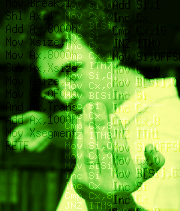Bon, je ne vais pas y aller par quatre chemins: animer ce blog en bilingue devient trop lourd pour moi. Entre le boulot qui me tient beaucoup plus devant un écran, les trajets en tous ssens pour les activités extra-scolaires des loustics, et -- avouons-le -- un laptop moins convaincant dont l'écran n'a jamais la taille qu'il faudrait, je peine déjà à rédiger ce qui me passe en tête quand je gribouille une page de notes sur ma tablette-liseuse-scanneuse.
Alors le faire en deux langues, ça devient vraiment infernal. C'est aussi au détriment du projet lui-même. En théorie, la France arrive toujours en n°2 dans les statistiques. Ai-je encore des lecteurs francophones ? (ai-je encore des lecteurs tout court ?)
N'hésitez pas à vous faire entendre: le sondage "English /Français" court toujours.
Monday, October 30, 2017
.fr ?
Tags: thisblog
Panic! GameInfo reading out of buffer!
- Panic! GameInfo reading 302251 out of ROM (302254)!
- halting emu: ARM9 PC=020406A0/02000F0B, LR=0204069C
- ARM9 halted
- halting emu: ARM7 PC=037F9B84/037F9B7C
- ARM7 halte
break *0x20406a0 if $r3 + $r0 > 0x300000 && $r0 < 0xb000000
could be working, except that GameInfo doesn't start at offset 0, but apparently rather at offset 0x08000000.
A bit more digging (setting the right breakpoint, using one more desmume patch to reveal registers R0 through R3) finally allowed me to get a stack trace....
And the offending memcpy was part of a buffer refill for waves.cmd file. For some reason, by incrementing the size, I hit a threshold where one more copy is needed, but then the very last bytes can't be read because the emulator believe they should always pick a 4 bytes from the current position (instead of an aligned 32-bit word holding the byte). Simply adding a zz.zz file that will come past the waves.cmd file make the code work again.
Tags: desmume, guru meditation
Tuesday, October 24, 2017
Finishing steps for School Rush
- [true] ensure the music track for the last level is different
- [done] bring in the amazing books as the background for the final level
- [>>>] make a funny "true ending" sequence
- [done] draw something for the missing loading screen(s?)
- [done] inkjets start aggressive in hard mode
- [wish?] page-swap bonuses as player progress into the levels to m4ke him b3liv3 th3 m4th 4r3 t4king 0v3r th3 w0r1d (originally mentioned here)
- [done] resume the normal level order/spawn points.
Yup. No code tonight. Just took some time to crawl through the old "todo" posts and collect a list of things that are still pending. As I can allow less and less time at once on my hobby project these days, I need to organize myself more ...
To be honest, I'm starting to be attracted more and more by things that aren't related to School Rush and less and less by finishing School Rush itself. Possibly because we're approaching a big release at work ... possibly because the Internet seems not to care a lot about the idea of rushing School Rush.
I wanted to temporarily disable the "window" feature on the torch-light GOB (just to check it has the shape it should), but when I do so, I get a cryptic "Panic! GameInfo reading out of buffer!" message from desmume... I'll have to investigate that.
edit:
- [done] With the window disabled, it looks like the OAM flipping isn't working for my torchlight-sprite. I'll have to understand why
- [done] While hacking the get-ready-to-swim fix, it looks like I broke a rule in the Bilou-got-hurt rules, allowing pendats (which are both hurting and solid) to combo-kill you
Monday, October 23, 2017
out'm'up

Retournons au passage à l'an 2000. La Inscene '99 avait plutôt été un succès en particulier pour mon jeu 100K, Crazy Brix. Deux choses étaient claires: 1) on y retourne l'an prochain et 2) on a plus de chances de parvenir à refaire un p'tit jeu en 1 an que d'aligner une mégadémo sur le thème "Samedi tous in my home"... Gédéon m'avait motivé à dépasser le simple test de boîtes de collisions pour le prochain titre. ça pourrait convenir pour un pinball ou un shoot-em-up.
Des shoot'em'up abandonés, j'en ai déjà une belle liste derrière moi, à l'époque: le Space Mission pour C64, la BD impliquant le polycosmos, le "Bilou Sky Quest" annulé par un verre de Franta et le Cosmowars foireux sous Game-Maker. Pourtant j'aime ça quand c'est bien fait. Que ce soit Warhawk ou Tyrian si il y a des étoiles et des barres de vies, je suis partant. Et comme j'avais la palette de couleurs de Tyrian sous la main, justement, je me suis lancé.

The second key development was to support a dynamic list of sprites, allowing fancy explosions, lots of shots and even powerups where crazybrix couldn't even accomodate for anything but a ball and a paddle. Two lists, in fact. This engine was the first time I decided to split objects in two separate casts to reduce the amount of collision checks required.
While the level design wasn't very inspired, the game received a brilliant soundtrack, a classic but good-looking starfield effect and Out'm'Up won the first place - although mostly due to the lack of significant competition.
Même s'il a disposé de 3 fois moins de temps que Crazy Brix, Out'm'Up a eu droit au niveau programmation à tout ce qui faisait défaut à son prédécesseur: des effets d'explosions, des power-ups, des sprites ennemis, des niveaux programmables.
J'avais même une structure 'scriptable' pour permettre à mon frangin de passer au level design une fois le travail sur le son terminé, mais il n'y a jamais montré beaucoup d'intérêt. L'aventure s'arrêtera donc une fois la première place de la Inscene y2k empochée. Ce sera mon dernier projet en VGA + S3M. mon dernier projet MS-DOS.
Tags: asm, collisions, history, modplayer, pppteam, shoot-m-up, y2k
Saturday, October 21, 2017
drop your weapons
I now have it fixed, by dropping the requirement of
NO_WEAPON when entering inkjets, adding a "THROW" test area when being in the inkjet and ensuring that we DROP_WEAPON if this area ever gets triggered.
F_THROW test area, and not on the found-matching-object transition expression (likely because the blador-side of the expression evaluation happens before the bilou-side expression).
Wednesday, October 04, 2017
OBJ-WINDOW: Look through the ink
 Petit tour d'horizon dans le document "gbatek" pour voir comment fonctionnent les sprites/fenêtres, une petite particularité de la console DS qui permet de basculer entre deux réglages de visibilité des différentes couches graphiques du jeu. Jusque là, je l'utilisais d'une manière assez simpliste pour dessiner l'encre ou les "rideaux" qui ferment la scène à la fin d'un niveau.
Petit tour d'horizon dans le document "gbatek" pour voir comment fonctionnent les sprites/fenêtres, une petite particularité de la console DS qui permet de basculer entre deux réglages de visibilité des différentes couches graphiques du jeu. Jusque là, je l'utilisais d'une manière assez simpliste pour dessiner l'encre ou les "rideaux" qui ferment la scène à la fin d'un niveau.
Un simple rectangle dans ce cas-là, qui permet de voir toutes les couches à l'intérieur de la fenêtre et aucune à l'extérieur.
Pour que l'on puisse voir Bilou nager dans l'encre, il me faudrait donc une deuxième configuration qui laisse voir une partie du niveau tout en gardant assez de noir. Il devrait suffire pour ça de changer un simple bit dans la configuration.
 J'hésite un peu quand à la manière d'implémenter ça ... Plus précisément, sur la manière d'indiquer depuis les scripts du jeu que l'on souhaite passer un certain sprite dans le mode "fenêtre". L'idéal serait probablement que l'information soit retenue dans les animations elles-même, mais sans nécessiter de modification de AnimEDS.
J'hésite un peu quand à la manière d'implémenter ça ... Plus précisément, sur la manière d'indiquer depuis les scripts du jeu que l'on souhaite passer un certain sprite dans le mode "fenêtre". L'idéal serait probablement que l'information soit retenue dans les animations elles-même, mais sans nécessiter de modification de AnimEDS.
En même temps, l'utilisation d'AnimEDS n'est nécessaire que si j'essaie de micro-optimiser et d'éviter un sprite 32x32.
Tags: deep ink pit, hardware, OAM, rush, sketch
Monday, October 02, 2017
Thanks, ::Twig
<div class="line">...</div>, remplace par <tt>...</tt>".
The XML::Twig package I used for the job seems pretty powerful -- and much easier to use than XmlStylesheetsTransformationLanguage, as far as I am concerned.
I can't help but dreaming about pushing it further and have blog excerpts integrated with code snippets on an enlightening document that would progressively turns the readers into code writers that would contribute to dsgametools ...
Il serait très tentant d'utiliser ça pour faire aussi un peu de fusion blog/doxygen, d'ailleurs. histoire de reprendre les schémas UML dans le code navigable.






 Vote for your favourite post
Vote for your favourite post


